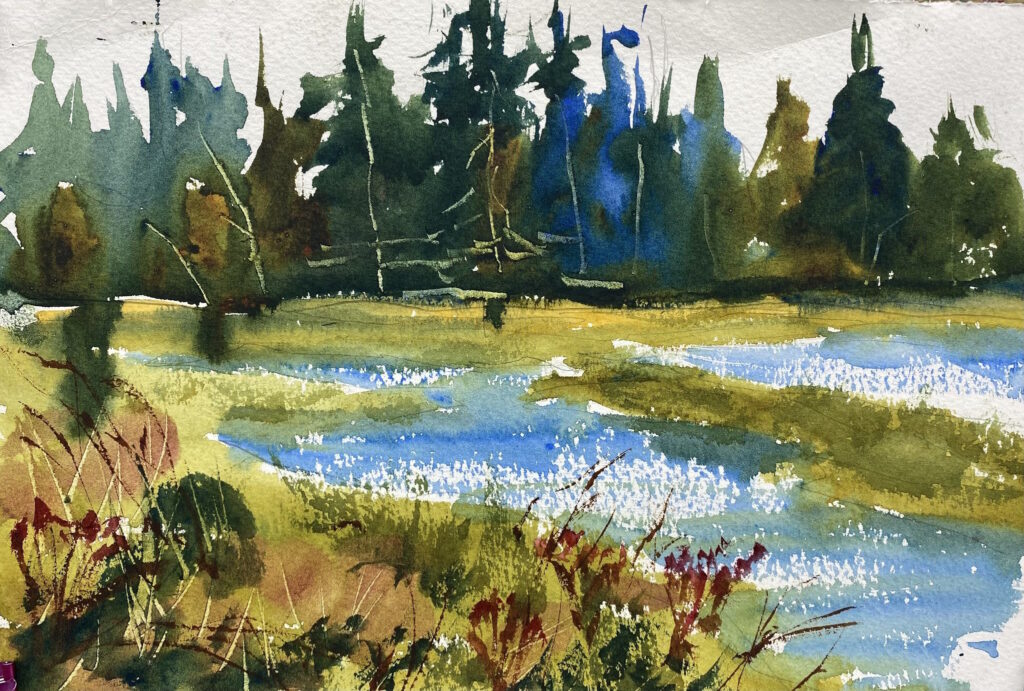Where the people meet

When Bainbridge Island was a patchwork of farms and orchards early in the last century, people didn’t get around much. So they built community buildings like Seabold Hall for community events, like dances, potluck dinners and holiday celebrations. It still stands, well taken care of, and it still hosts community functions.
I set up my easel in the grassy lot next to the hall and started to paint. There wasn’t much car traffic, but lots of people came by on their daily walk, many of them with a dog or two. I found it very calming and peaceful. The day was cool and partly cloudy, just the right conditions for a plein air painter.
I think I got the perspective right on the building, but I lost control of the washes on the roof. I enjoyed adding the figures, and I’m happy with the looseness of this painting.
Where the people meet Read More »











